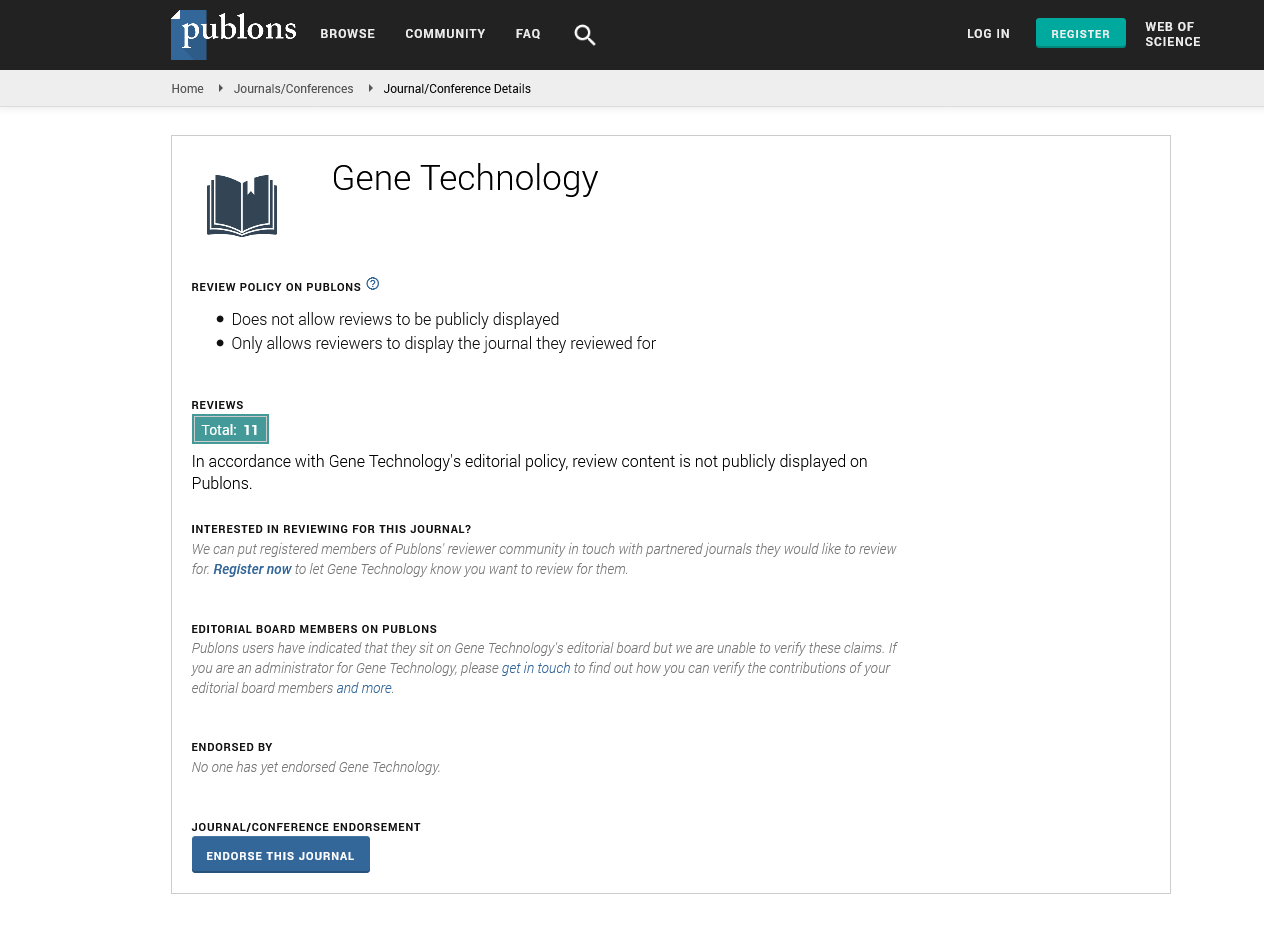Indexed In
- Academic Keys
- ResearchBible
- CiteFactor
- Access to Global Online Research in Agriculture (AGORA)
- RefSeek
- Hamdard University
- EBSCO A-Z
- OCLC- WorldCat
- Publons
- Euro Pub
- Google Scholar
Useful Links
Share This Page
Journal Flyer

Open Access Journals
- Agri and Aquaculture
- Biochemistry
- Bioinformatics & Systems Biology
- Business & Management
- Chemistry
- Clinical Sciences
- Engineering
- Food & Nutrition
- General Science
- Genetics & Molecular Biology
- Immunology & Microbiology
- Medical Sciences
- Neuroscience & Psychology
- Nursing & Health Care
- Pharmaceutical Sciences
Perspective - (2024) Volume 13, Issue 1
Mutational Impacts on Protein Binding Sites and Insights from Large-Scale Genomics
Liu Chou*Received: 01-Mar-2024, Manuscript No. RDT-24-25258; Editor assigned: 04-Mar-2024, Pre QC No. RDT-24-25258 (PQ); Reviewed: 18-Mar-2024, QC No. RDT-24-25258; Revised: 25-Mar-2024, Manuscript No. RDT-24-25258 (R); Published: 01-Apr-2024, DOI: 10.35248/2329-6682.24.13.270
Description
Genomics is the vast amounts of data generated from large-scale genomic screens have opened new avenues for understanding the complexities of genetic mutations and their implications. One critical aspect of this search in deciphering the effects of mutations on protein binding sites. As mutations play a pivotal role in disease development and progression, their impact on protein interactions offers valuable insights into potential therapeutic targets. The significance of interpreting mutations in protein binding sites, exploring how advancements in large-scale genomic screens are reshaping our understanding of these intricate molecular interactions.
Protein binding sites are regions where proteins interact with other molecules, such as other proteins, DNA or small molecules. These interactions play a pivotal role in cellular processes, signaling cascades, and overall biological function. Mutations occurring within these binding sites can disrupt the delicate balance of molecular interactions, leading to cellular functions and contributing to the development of various diseases, including cancer. Advancements in genomic technologies have facilitated large-scale genomic screens, enabling the systematic analysis of genetic mutations across diverse populations. These screens, such as those conducted through initiatives like The Cancer Genome Atlas (TCGA) and the International Cancer Genome Consortium (ICGC), provide a wealth of data on genomic alterations in various diseases. Within this information the impact of mutations on protein binding sites. Not all mutations are created equal. Among the myriad mutations identified through genomic screens, distinguishing driver mutations from passenger mutations. Driver mutations confer a selective growth advantage to cells, promoting tumorigenesis, while passenger mutations are incidental and do not contribute significantly to the cancer phenotype. Identifying driver mutations within protein binding sites is particularly relevant, as these mutations can directly influence critical cellular pathways.
Interpreting the effects of mutations on protein binding sites requires sophisticated computational tools and predictive models. Various algorithms leverage structural and functional information to assess the impact of mutations on protein-protein or proteinligand interactions. These tools aid researchers in prioritizing mutations with the highest likelihood of disrupting binding events, guiding subsequent experimental validations. Understanding the functional consequences of mutations within protein binding sites is a multidimensional task. It involves evaluating changes in protein structure, alterations in binding affinity, and the downstream impact on cellular processes. Integrating experimental techniques, such as site-directed mutagenesis and functional assays, with computational predictions enhances the accuracy of assessing mutation-induced changes in protein interactions. Cancer largescale genomic screens have been instrumental in separating the molecular tapestry of various malignancies. By scrutinizing mutations within protein binding sites, gain insights into the dysregulation of key signaling pathways. For instance, mutations in the binding sites of tumor suppressor proteins or oncogenes can tip the balance towards uncontrolled cell growth, providing potential targets for therapeutic intervention.
The insights derived from the interpretation of mutations in protein binding sites contribute significantly to the pattern of precision medicine. Identifying specific mutations allows clinicians to tailor therapies based on the unique mutational profile of individual patients. For example, drugs targeting specific proteins or pathways affected by mutations in binding sites can be prioritized, maximizing treatment efficacy while minimizing adverse effects. Despite the strides made in understanding the impact of mutations on protein binding sites, challenges persist. The dynamic nature of protein interactions, the vast number of potential mutations, and the need for experimental validation pose ongoing hurdles. Future research endeavors should focus on refining computational models, integrating multi-omics data, and developing high-throughput experimental techniques to accelerate the translation of genomic insights into therapeutic strategies.
Interpreting the effect of mutations on protein binding sites from large-scale genomic screens in contemporary molecular biology and precision medicine. As we navigate the landscape of genomics, the integration of computational predictions with experimental validations holds the key to separating the functional consequences of mutations. The knowledge from this only advances our understanding of disease mechanisms but also propels us toward more targeted and effective therapeutic interventions. In personalized medicine, decoding the impact of mutations on protein binding sites stands as a evidence to the transformative power of genomics in shaping the future of healthcare.
Citation: Chou L (2024) Mutational Impacts on Protein Binding Sites and Insights from Large-Scale Genomics. Gene Technol. 13:270.
Copyright: © 2024 Chou L. This is an open-access article distributed under the terms of the Creative Commons Attribution License, which permits unrestricted use, distribution, and reproduction in any medium, provided the original author and source are credited.

